The Beginner’s Guide to Growing an Amazing Aquarium
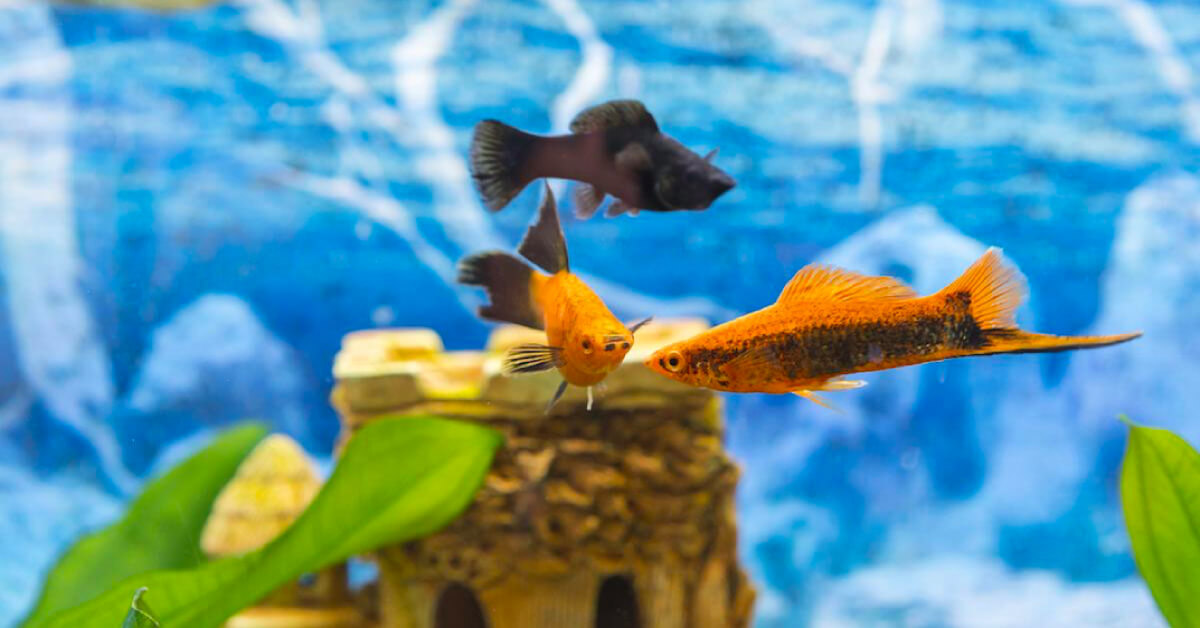
Thinking about getting a pet but you’re allergic to fur or worried that it might get lonely when it’s home alone? Starting an aquarium is an amazing option instead! Fishes can more interactive than people believe them to be, and simply looking at them swimming gracefully around is indeed a relaxing experience.
Here is a quick guide to get you started on your first aquarium:
Types of fishes
There are 3 main types of fishes that you can keep: Coldwater fish, Tropical Freshwater fish, and Saltwater fish.
Each type will require different care, conditions, space, and equipment, but in general, Coldwater fish and Tropical freshwater fish can withstand poorer water conditions better than their Saltwater counterparts, making them more suitable for beginners.
Setting up a tank for Coldwater fish and Tropical Freshwater fish is pretty similar, except that Tropical fish requires a heater to warm the water slightly. Tropical fish are also very sensitive to temperature and noise, so their tank should be safe from anything that might disturb and stress them.
However, for Saltwater fish, their tanks generally should be equipped with a heater and the water should contain salt, and you would also need to learn how to calibrate the other equipment and environmental factors in the tank, including air pumps, filters, and also the pH level and water conditions. It is really recommended to have some experience with other types of fishes before trying to maintain a saltwater tank.
Size matters
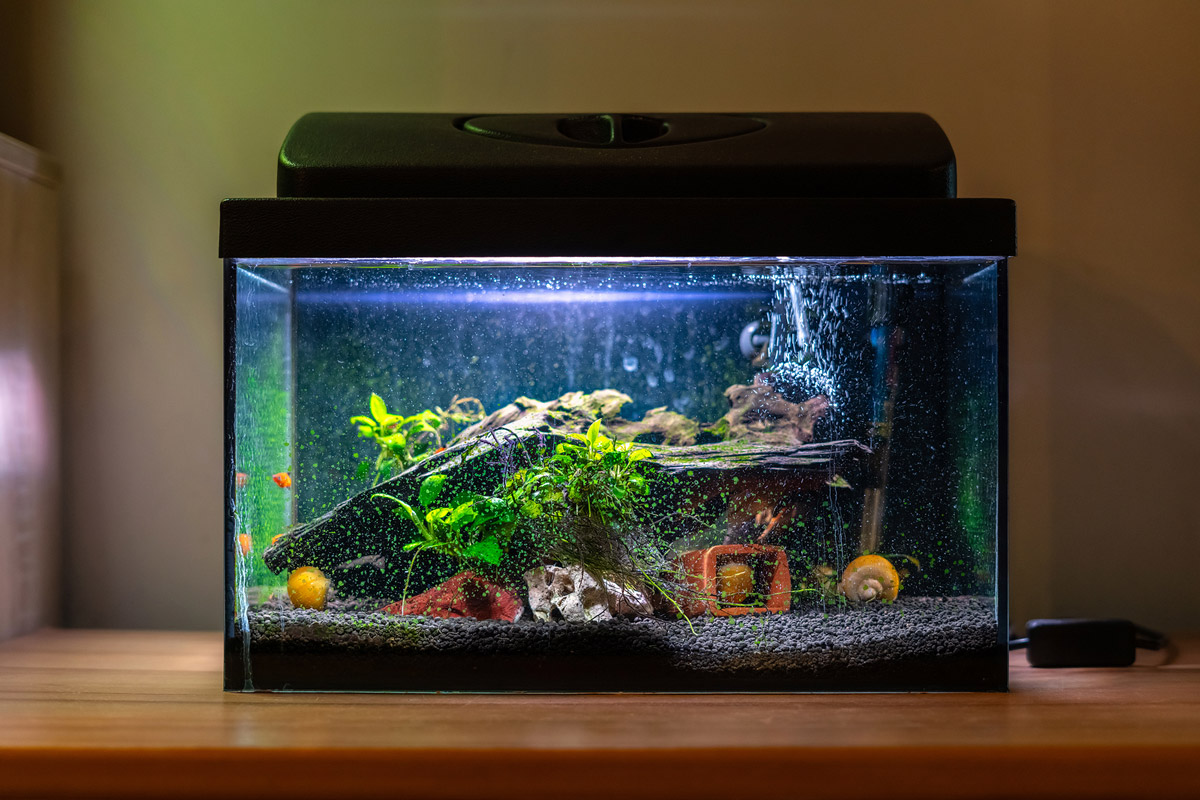
The general rule of getting a tank is: The bigger the better. With a bigger tank, it would be easier for you to maintain good water conditions because it’s easier to clean and there are not too much waste particles produced in the water, plus there’s more space for your fish to swim around happily and stay healthy.
Of course, you should also factor in practical constraints such as price, the space in your home, and the time you have to maintain the tank.
Positioning your aquarium
Firstly, do not to place your tank under direct sunlight or near heaters. If you do that, you would end up with a tank that is green, full of algae, and has cloudy water. Sunlight can also dramatically raise and lower the temperature within a fish tank, making it difficult to maintain a constant water temperature. Fishes do not have the ability to regulate their body temperature like mammals, so it’s crucial that you keep the water at the right temperature.
Secondly, this might surprise you, but one of the biggest killers of fish is stress. Place your tank in an area with little outside movement, light, or noise so that they can swim around in peace.
Finally, your fish tank is going to require some electrical equipment and lots of maintenance, which we will discuss later. Remember to find a spot not too far from power outlets and a water supply in your home!
Filters, air pumps, heat, and light
Every aquarium needs a good filter, air pump, lighting, and gravel. A good filter will keep the water in the tank cleaner for a longer period of time by removing pollutants, debris, and waste. This, in turn, means that you can spend less time cleaning the tank and stress your fish out less.
Lighting can help to make your aquarium look more beautiful and bring out pretty patterns on the fish’s body. If you decide to put live plants in the tank, they would also need light to conduct photosynthesis and stay healthy.
As do humans, fish need oxygen to survive too. An air pump will keep the water in the tank oxygenated and prevent the water from becoming stagnant, and depending on the breed of fish you are going to keep, you might require heaters to regulate the temperature of water in the tank as well.
Gravel
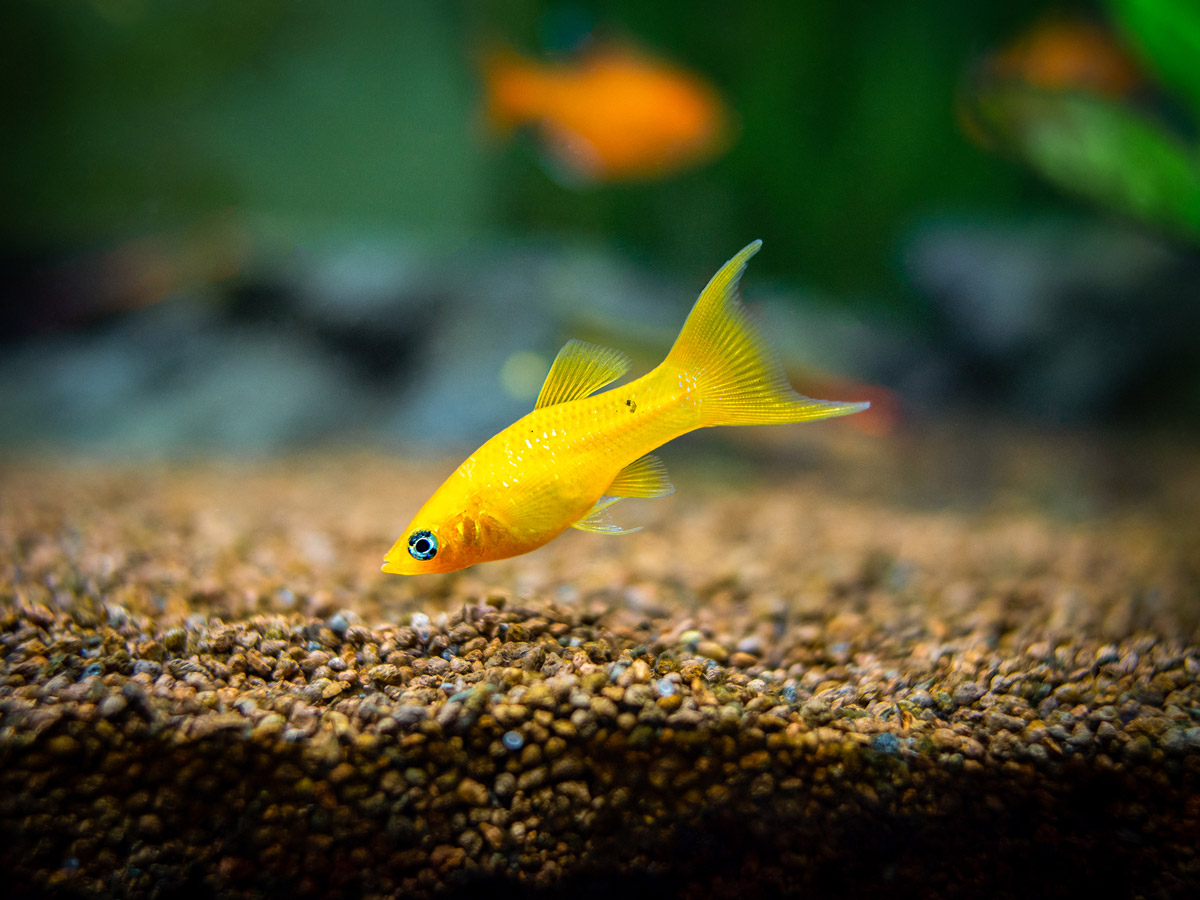
Having gravel at the bottom of your tank is not just aesthetically pleasing; gravel helps to maintain a healthy environment for your fish, because a healthy aquarium requires a balanced nitrogen cycle. This only occurs when good bacteria in the water convert ammonia from the fish waste into nitrate, and gravel helps to promote this cycle, as it is where most of the good bacteria will live and grow.
Plants and greenery
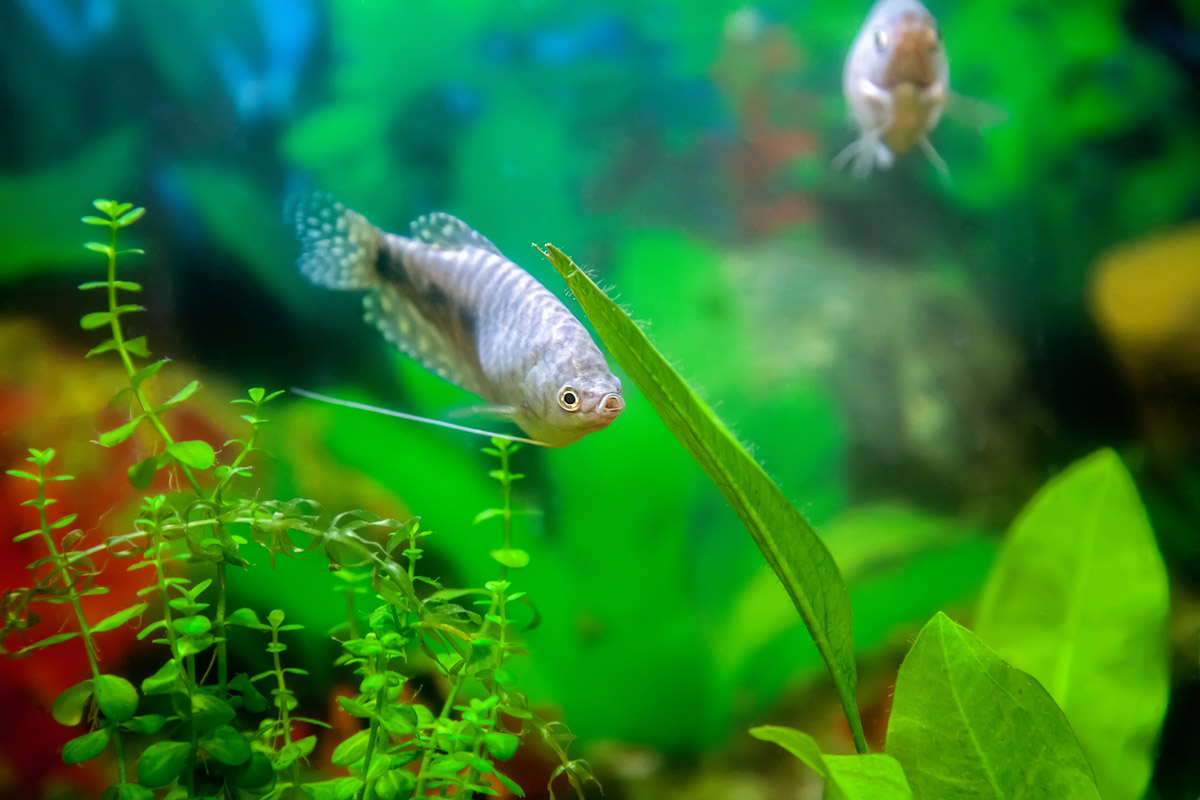
When it comes to using plants and greenery to decorate the aquarium, it is mostly about personal preference, but it would be good to take a deliberate and thoughtful approach to it as well. This is because creating a varied aquatic environment can provide fish plenty of hiding places to avoid stressful stimuli, explore the tank, and behave as they would in nature.
The good thing about using fake plants is that they come in a variety of colours that will add a touch of vibrancy to your tank. On the other hand, live plants will have a healthy symbiotic relationship with your fish, in which they promote good water conditions by producing oxygen and removing the carbon dioxide in the water while your fish can benefit your plants as fish waste contains nitrogen, which plants need.
Dechlorinate the water
Always dechlorinate tap water before adding it to your tank! Untreated tap water contains chlorine, chloramines, and other metals that are all dangerous for fish. To do so, simply add liquid dechlorinator to the water before filling your tank. Once you’ve filled it completely, make sure to test the water before adding your fish and monitor the water temperature, salinity, gravity, pH, ammonia, and nitrite levels.
Take it slow
As exciting as it might be to see your aquarium in its full glory, take it slow when it comes to adding fish into the tank. For fish in a tank, less is more. Overcrowding will stress out fish and dirty your tank a lot faster. Instead, start with just a few fish and gradually add one or two more every two weeks or so.
By adding just a couple of fish at a time, you’re giving your filtration system the time needed to take on the increased biological load that the new fish introduce. You should also let the new fish (still in its bag) float in the tank for about 15 minutes first for the fish to become acclimated to the tank’s temperature and pH level.
Maintenance
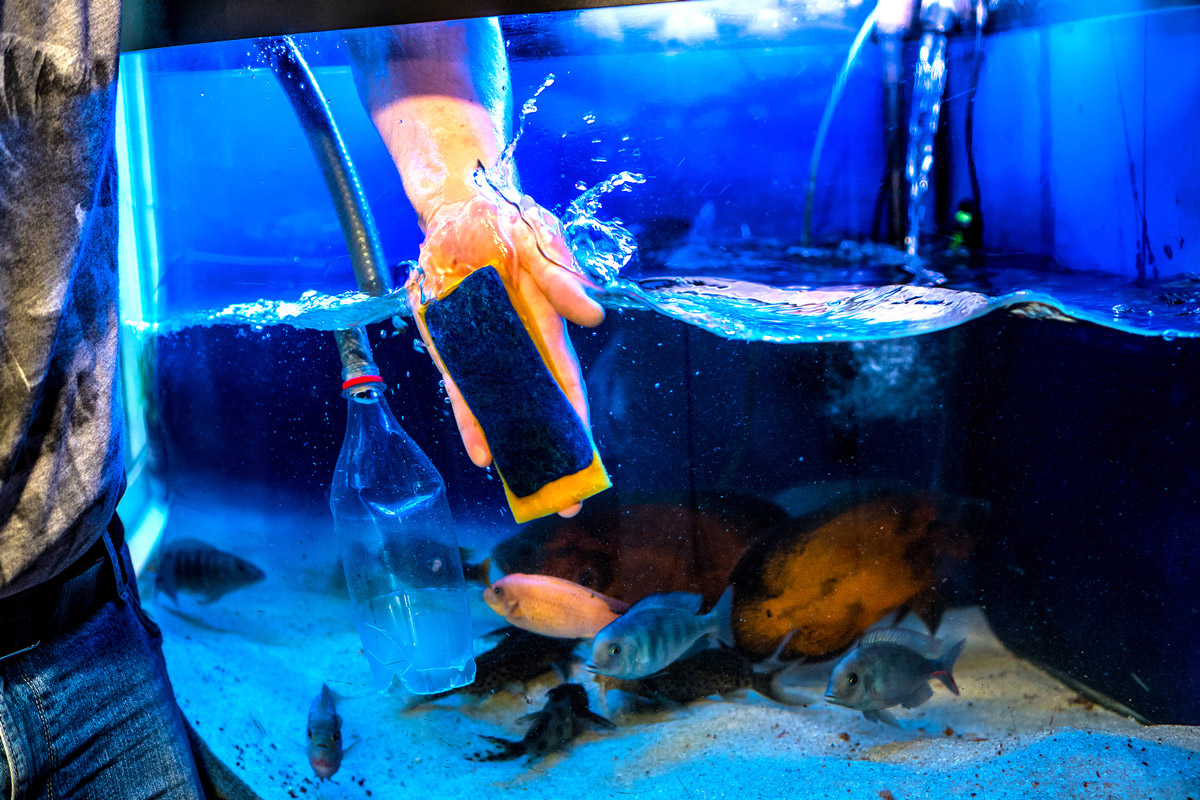
Contrary to popular belief, fish are not really low-maintenance pets. You will have to put in the time and effort to clean your tank regularly and monitor the water conditions closely daily, just like with any other pet.
Otherwise, your fish might fall sick due to unhygienic tank conditions – although fish can become sick for several reasons such as overcrowding, the introduction of a new fish carrying a disease, and overfeeding (small feedings once or twice a day is enough to keep them content and healthy).
To know if your fish is sick, keep a lookout for signs like clamped fins, irritated skin, protruding scales, bulging eyes, whitish-green threads, and overly aggressive or passive behaviour.
All the best in your fish-rearing experience!








